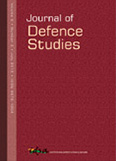India’s Geostrategy and China: Mackinder versus Mahan?
Two recent events exemplify India’s geopolitical dilemma. In early April 2013, it was reported that Chinese submarines had been conducting forays in the Indian Ocean that were apparently picked up by US Navy sonar.1 A few weeks later, there was a Chinese intrusion in the western sector where a platoon of Chinese troops entered the Depsang Valley area of eastern Ladakh.2 While the status quo ante was peacefully attained, the Ladakh incident is a vivid reminder of the abiding implications of an unresolved Himalayan dispute.
- Zorawar Daulet Singh |
- July 2013 |
- Journal of Defence Studies




